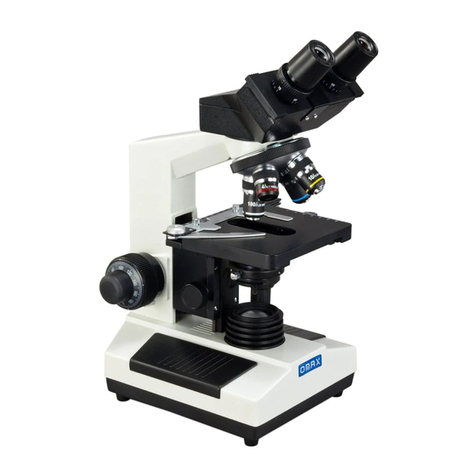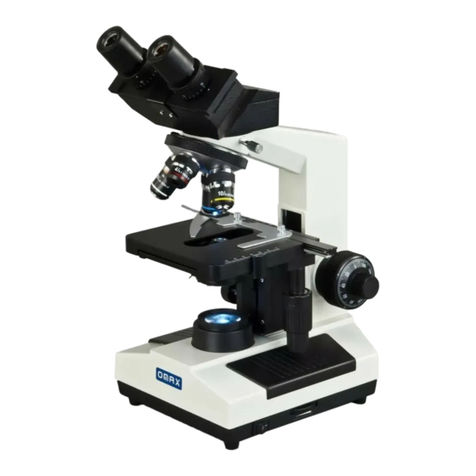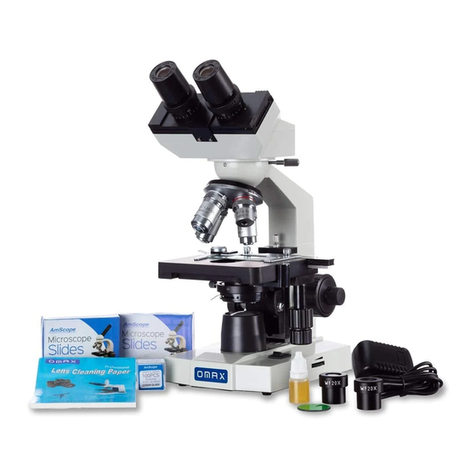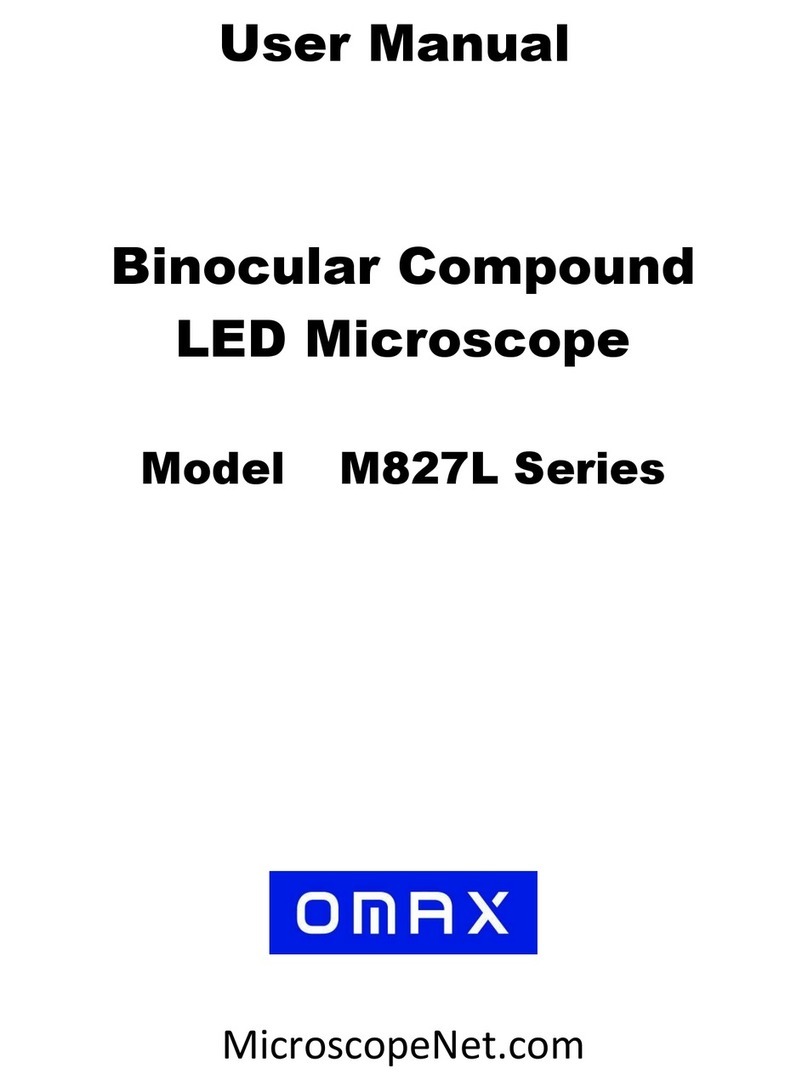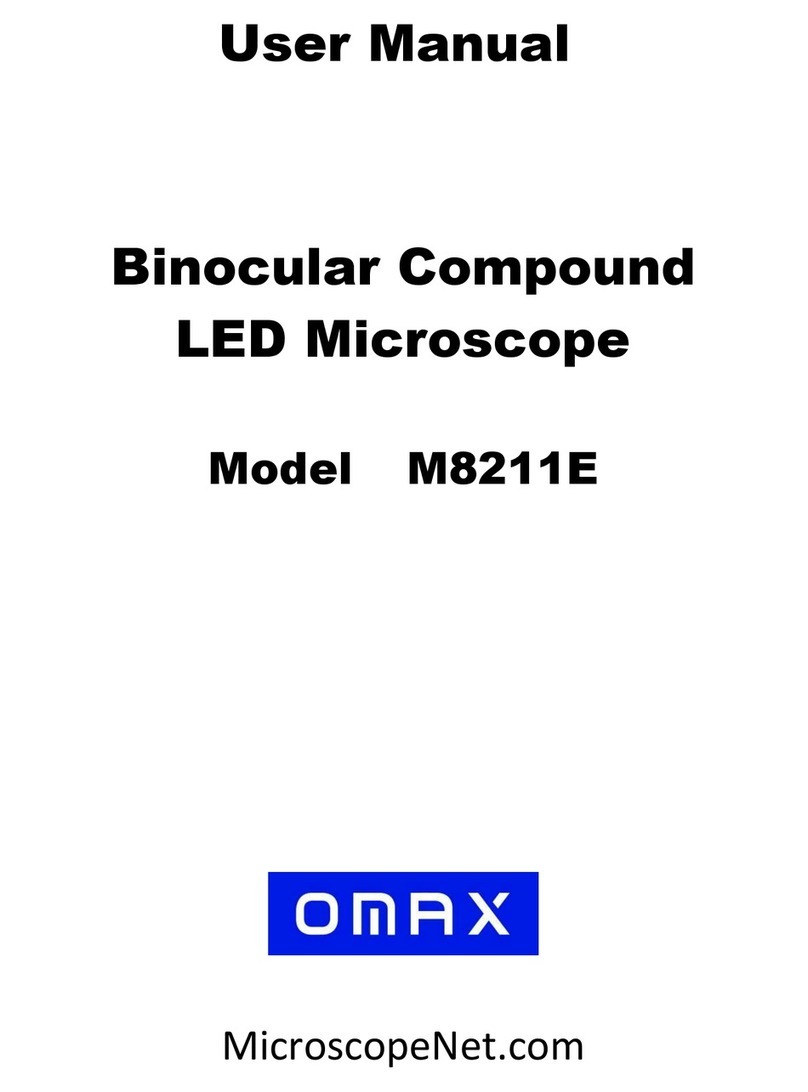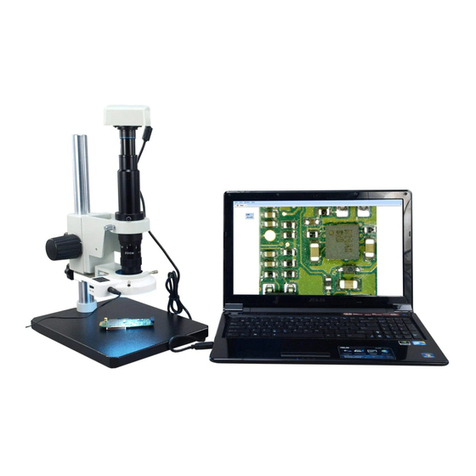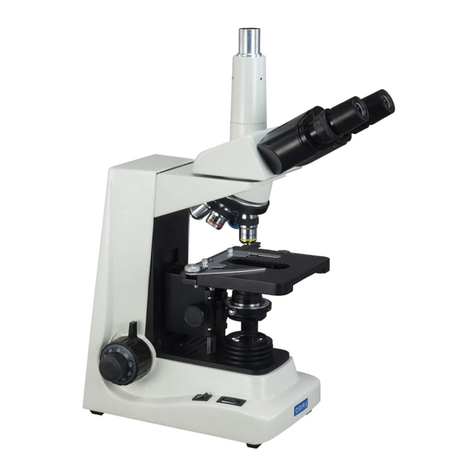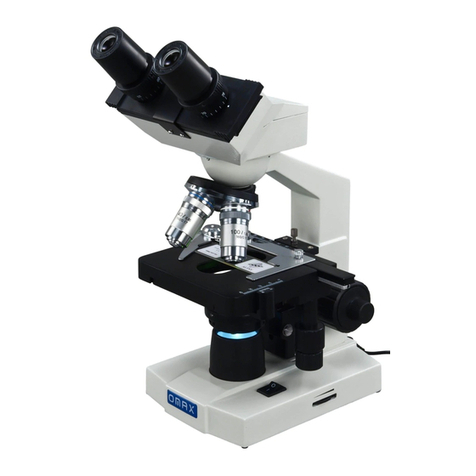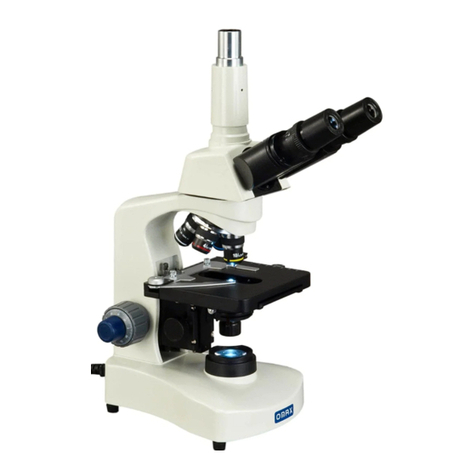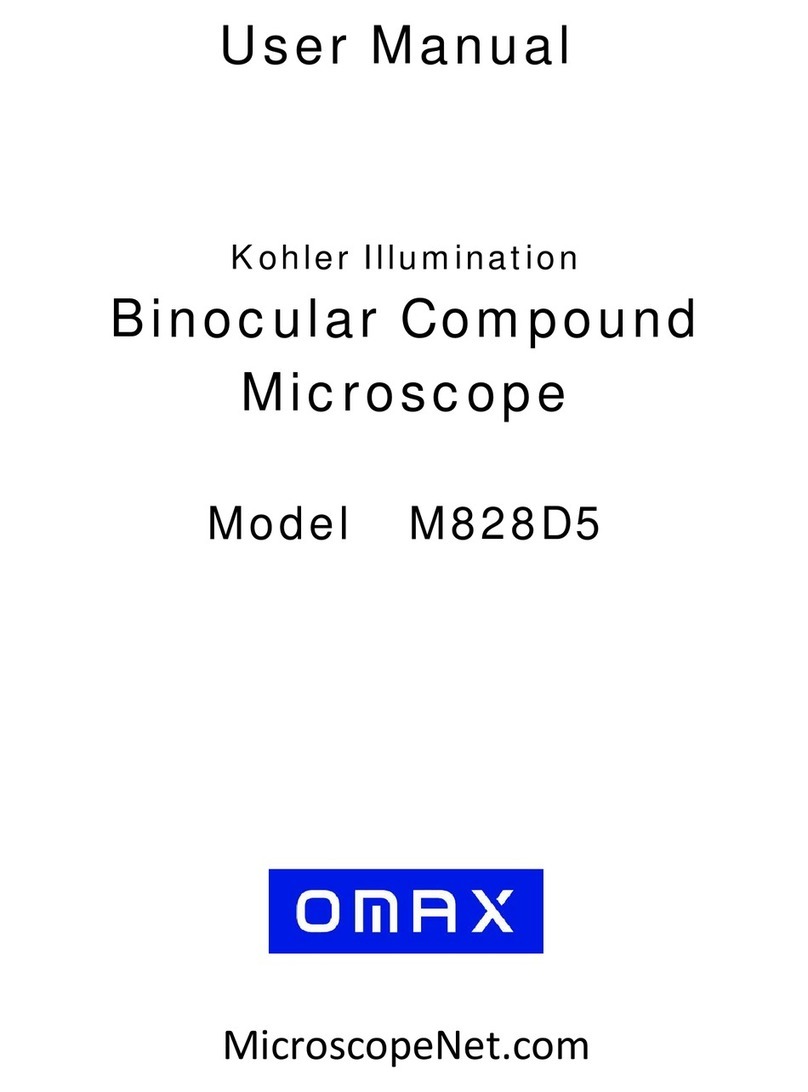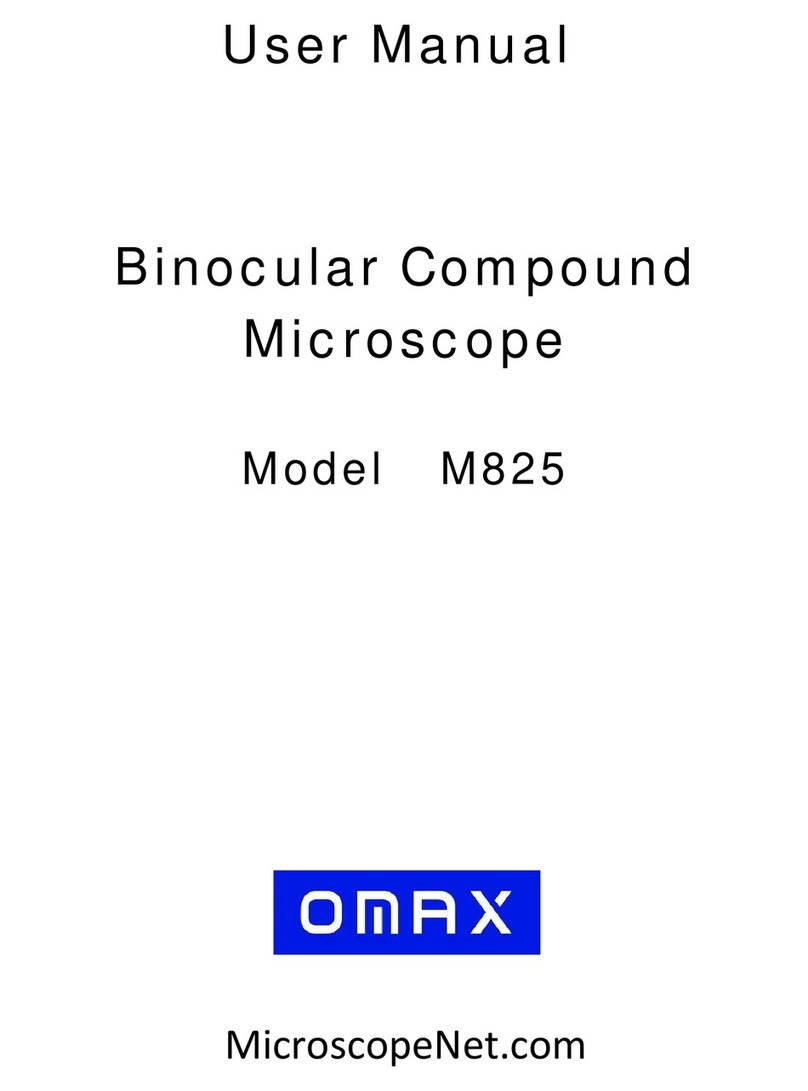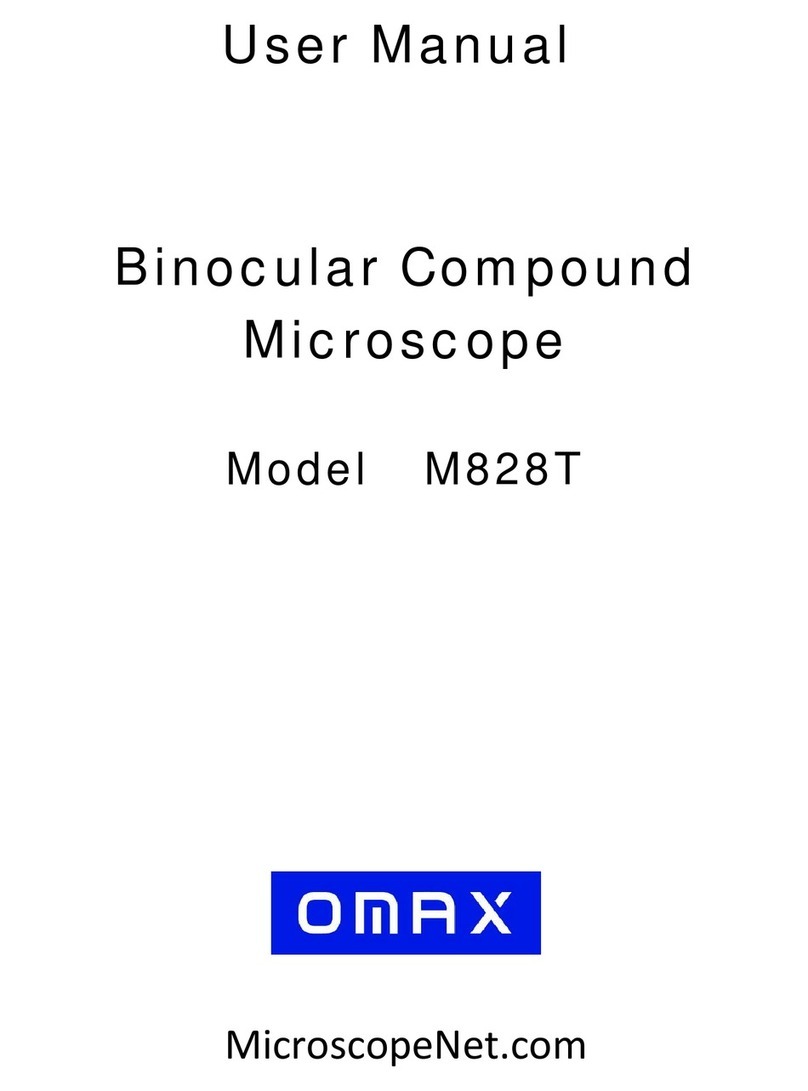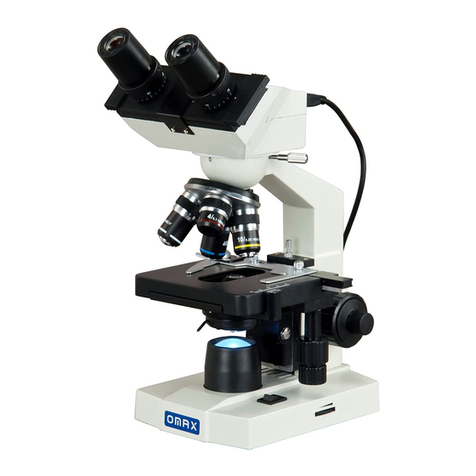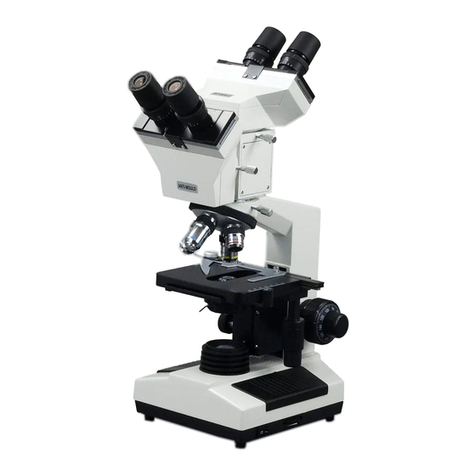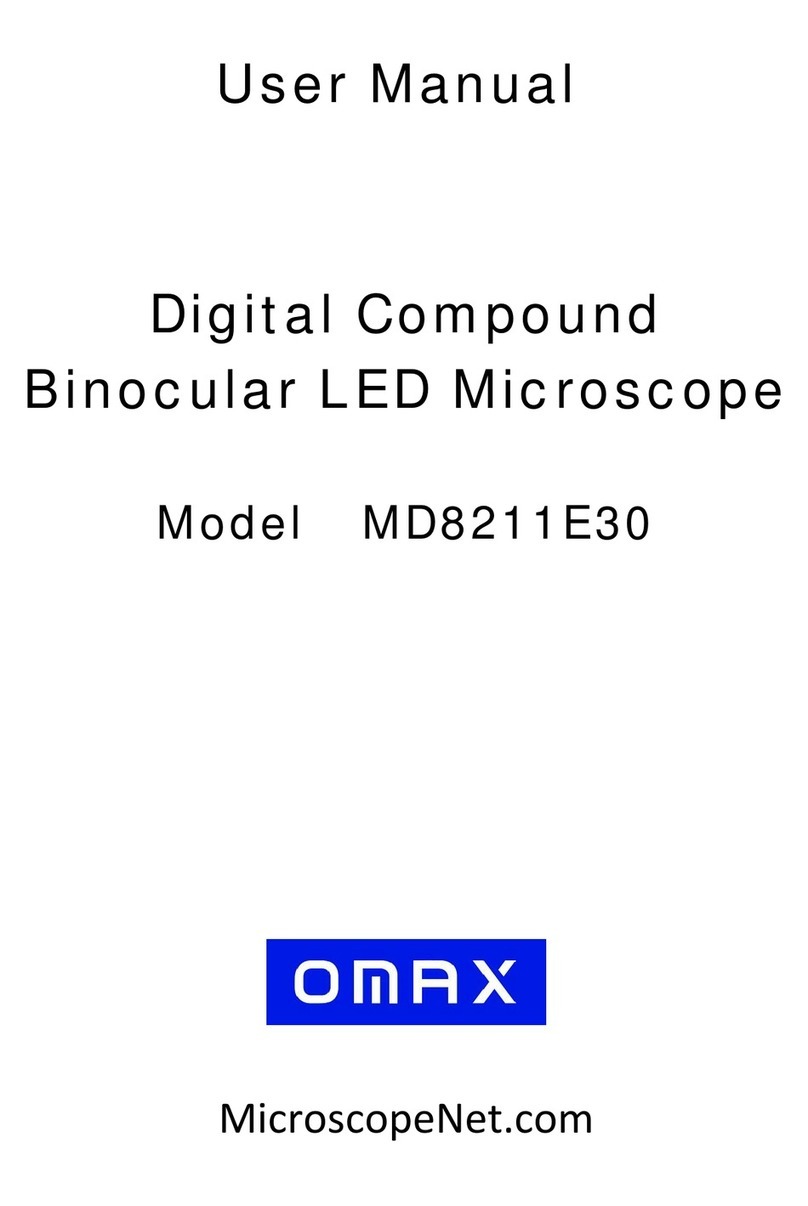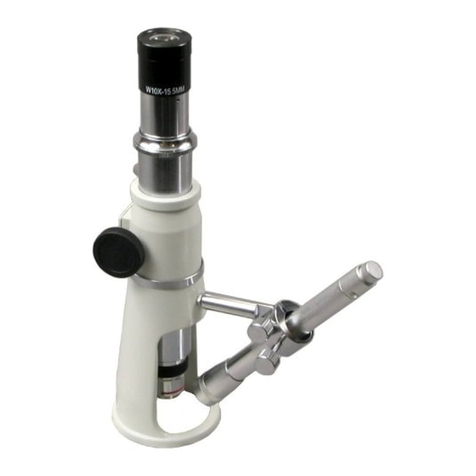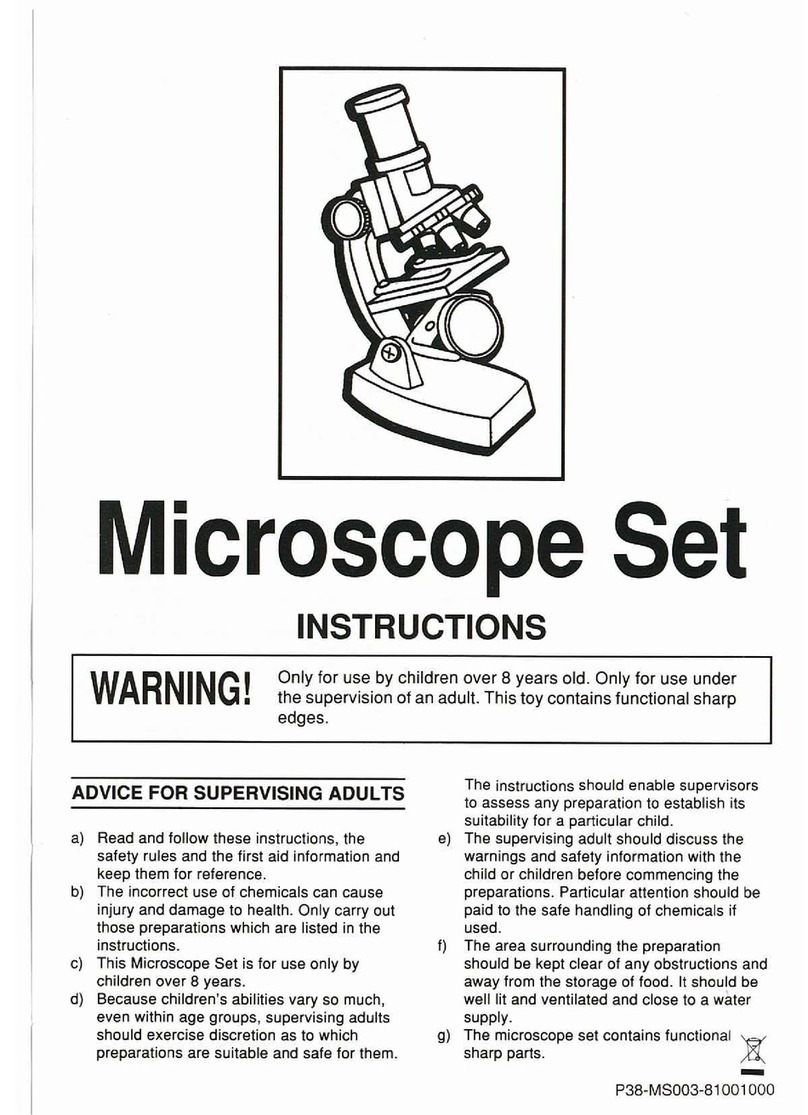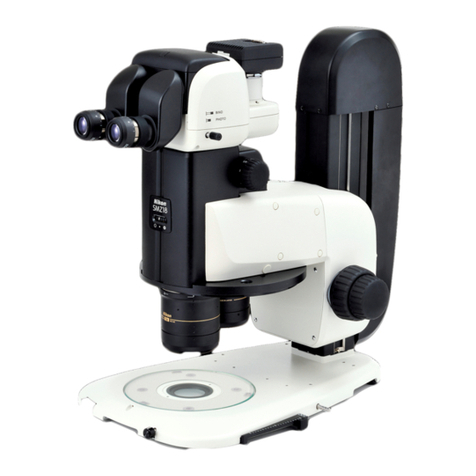
www.microscopenet.com
6
3. Operation
3.1 Adjusting illumination
1) Plug the power cord into the power socket on the microscope and connect it to the
power outlet.
2) Turn on the power switch.
3) Rotate the brightness intensity dial to increase or decrease the brightness of the
illuminator.
Caution:
A diffusion filter is attached beneath the condenser to get uniform light and protect
your eyes from strong LED light when a low power objective applies. The diffusion
filter can be swung out to make the view field brighter when observing with a high
power objective, such as 100X objective.
3.2 Placing specimen
1) Place the slide on the mechanical stage.
2) Use the slide holder to gently secure the slide.
3) Turn the X and Y stage moving knobs to position the specimen in the center of
viewing field.
Caution:
Be sure not to allow an objective to touch a specimen slide when changing objectives.
3.3 Focusing
1) With the 10X objective in position, raise the mechanical
stage using the coarse focus knob until the specimen is
close to the objective.
2) Turn the coarse focus knob until the specimen is in
focus. Then use the fine focus knob to obtain a sharp
image. You may now switch to another magnification
objective.
3) To get a good focused image, you may need to combine
the focus knob adjustment and interpupillary distance
adjustment, along with eyepiece diopter adjustment
stated in 3.4 and 3.5.
Tips:
To prevent your specimen slide from making contact with an objective, turn the 100X
objective in position and adjust the thumb screw of focus stop (as shown in Fig.5) so
that the 100X objective will not contact the specimen while the stage is adjusted to its
highest position. Give the stage a tiny extra moving space to ensure the objective can
be focused every time.
3.4 Adjusting interpupillary distance
While observing with both eyes, hold the left and right eyepiece tubes then swing
them around the center axis. The interpupillary distance is correct when the left and
right fields of view converge completely into one image.
3.5 Adjusting eyepiece diopter
1) Using the 10x objective and your right eye only, observe your specimen through the
eyepiece and bring it into focus by adjusting the focus knobs.
